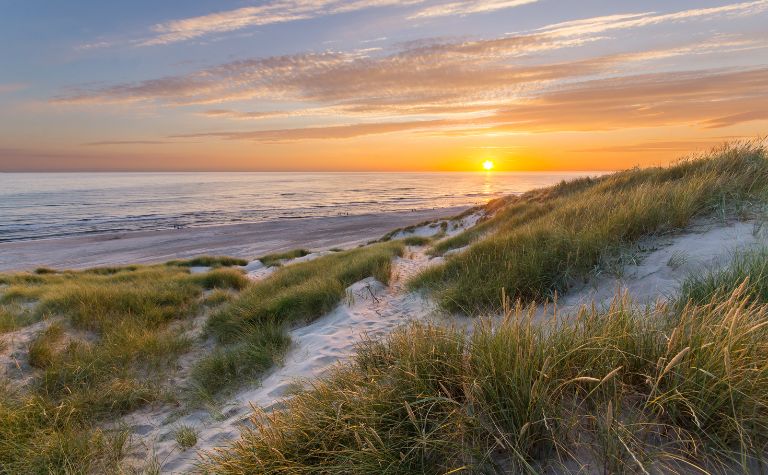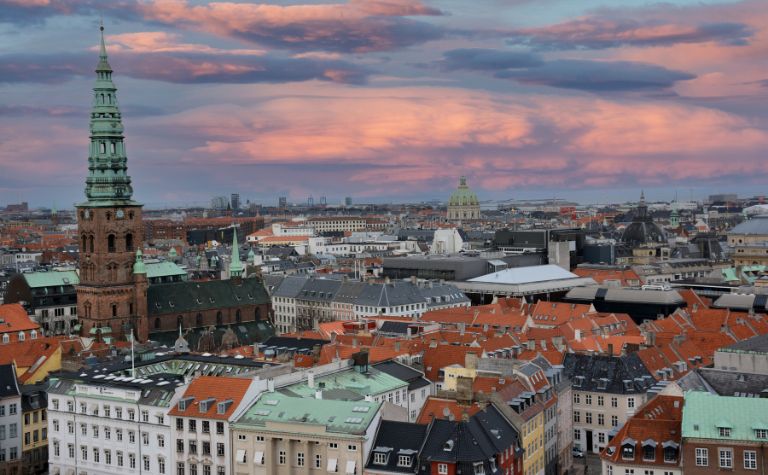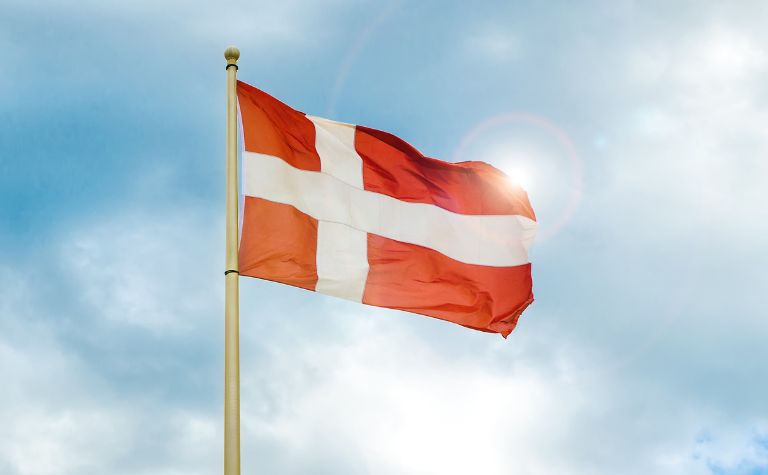Mainland Denmark is surprisingly flat, particularly for a Northern European country. When people think about Northern Europe’s geography, they typically imagine hills and mountain ranges, which are densely forested and perfect for hiking.
Denmark is vastly different, as it’s a big green plane, more suitable for cycling than hiking, which often makes one curious about its peculiar geography.
There are no mountains in Denmark because a long time ago, Denmark and Norway separated, causing Denmark to sink and become a basin.
After the last Ice Age, the withdrawal of the glaciers made the area even flatter. This shaped the territory of Denmark into what it is today.
This article explores Denmark’s interesting terrain and the reasons behind its unusual shape. It will also discuss the effects of Denmark’s geography on its current economy and way of life.
Also, see What Is There To Do In Denmark? to learn more.

Why is Denmark So Flat?
The cause of Denmark’s flatness lies in ancient history, or better said prehistory.
Many years ago, the landmasses that are now Norway and Denmark were pulled apart, and the territory that is now Denmark sank, creating a flat basin.
In more recent times, that is, during the last Ice Age, Northern Europe and most of what is now the British Isles were covered by a thick layer of ice. This layer also covered what is now Denmark.
As the Ice Age drew to a close and the glaciers withdrew, they flattened out the surface of Denmark even more. [1]
This created the geography of Denmark as it is known today, a flat area with the lowest point of -7 meters (22.96 ft.) below sea level, and the highest point of 171 meters (561 ft.) above sea level.
Denmark today is a flat area, perfect for agriculture, and features only a few gentle hills. This gives the country a quaint appearance, with scenic and peaceful landscapes.
This starkly contradicts the other Scandinavian countries, which are mostly rugged, cold, mountainous areas.
Denmark has no real mountains, but it has some hills that break the flatness of its landscape. These hills should be given some consideration.
The Hills of Denmark
The highest point in Denmark is Møllehøj, standing at 171 meters (561 ft.) tall. [2]
On top of the hill is a burial mound from the Bronze Age, which adds a few additional meters to its height.
With the burial mound, the hill is 172.66 meters (566.5 ft.) high, which is quite remarkable for Denmark.
Another historically and topographically important hill is Himmelbjerget.
The name translates to “The Sky Mountain”, which is quite optimistic for its height of 147 meters (482.3 ft.).
Even though it’s only the fourth tallest hill in Denmark, it’s quite remarkable because its location makes it stand out and seem much taller than it is.
Himmelbjerget is also important in Danish history. In the 19th century, people gathered there to celebrate the birth of the Danish nation.
There is also a red brick tower on the hill’s top, built in honor of Frederick VII, who gave the country its first constitution. [3]
Some other monuments dedicated to remarkable individuals are also on the hill.
They include a monument commemorating women getting the right to vote in 1915.
The hill is also an attractive area for hikers, even though it’s less rugged than what most hikers are used to.
Several hiking routes include the hill, and it’s also possible to do small-scale hiking around and on it. [4]
Another high area is Denmark’s white cliffs, known as Møns Klint.
While not exactly hills, they are still way above sea level, with the highest point at 128 meters (420 ft.).
The area also includes forests, ponds, pastures, and some hills, including Aborrebjerg, which is quite high at 143 meters (469.1 ft.).
Additionally, the whole area is a nature reserve, drawing many visitors every year.
Also, see What Is Denmark Known For? to learn more.

The Influence of Denmark’s Geography
The flat terrain of Denmark and its rich, fertile soil make the country a perfect place for agriculture.
The temperate climate and lots of rain are additional advantages that the country has in this regard.
61% of Denmark’s area is cultivated a remarkably high number. [5]
Danish farms are exceptionally large, averaging 172.9 acres (69.97 h) per farm. Many farms are even larger than that.
Only 20% of the homesteads have over 247 acres (99.96 h).
The country is obviously using its agricultural capacities to the maximum.
Denmark’s agricultural production is highly productive.
Danes produce enough food to feed 15 million people, while their population is only around 5.7 million.
Danish farms produce a lot of fruits and vegetables, as well as lots of cereals, which are mostly eaten by animals.
The country also exports large amounts of meat, dairy, and fur.
Denmark’s flat landscape has had an astonishingly positive effect on the country’s economy.
It has allowed its agricultural production to flourish and stay exceptionally productive, able to take on any challenge it might face.
Also, see Do Danish People Like Danishes? to learn more.

The Faroe Islands and Greenland
Greenland and the Faroe Islands are often left out of discussions about Denmark. This is not without reason.
While the two islands are officially a part of the Kingdom of Denmark, they have achieved a great degree of autonomy and have developed unique cultures.
This is even more true regarding the Faroe Islands.
These two regions are also unique when it comes to their geography. Unlike Denmark proper, they’re rocky, rugged, and far less hospitable.
The Faroe Islands have a mild climate for the latitude, but the terrain is very rocky, and most of the islands are bordered by steep cliffs.
Agriculture is not a huge part of the economy, as the islands’ natural resources are mostly limited to hydropower and fish.
The highest mountain is Slættaratindur, 880 meters (2887.14 ft.) tall, much higher than anything one might see in Denmark.
Greenland is even more inhospitable. It’s covered by the world’s largest ice sheet, and the population is confined to small pockets.
The terrain is rugged, covered with ice, and rocky, and there is practically no space for growing food.
The highest point is Gunnbjørn Fjeld, at 3,700 meters (12,139.11 ft.), drastically higher than anything in either Denmark or the Faroe Islands.
Conclusion
Denmark has no mountains because it’s in a basin. The area was further flattened by the glaciers during the last Ice Age.
Also, see How Much Does It Cost to Live in Denmark? to learn more.
References:
[1] Source
[2] Source
[3] Source
[4] Source
[5] Source
